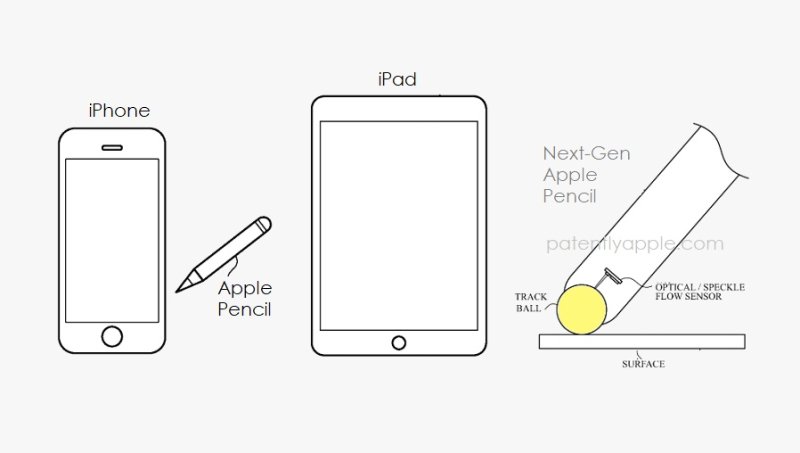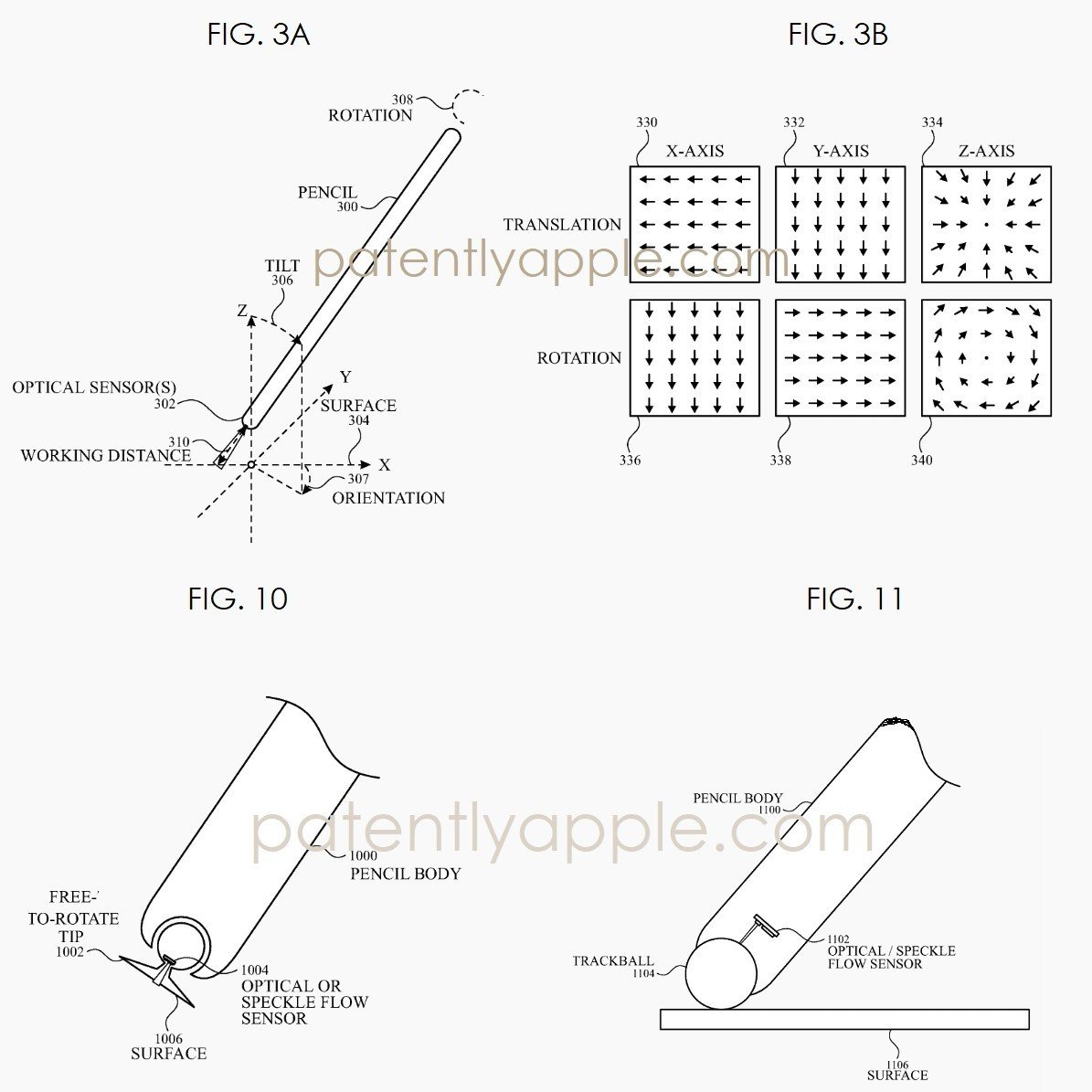Apple has just been issued a patent for a next-generation Apple Pencil that would massively upgrade the stylus’s abilities across many surfaces and Apple devices. According to the patent description uncovered by Patently Apple, the United States Patent and Trademark Office (USPTO) granted the patent for a new stylus design with optical sensors, allowing it to work potentially without traditional touch-screen interaction.
Apple Pencil with optical sensors: A leap beyond capacitive screens
The new patent granted under the title “Input Device With Optical Sensors” elaborates upon a stylus able to detect motion, tilt, rotation, and position in three-dimensional space through built-in optical tracking technology. Until now, all Apple Pencil models have required capacitive touch displays such as the iPad for the device to capture different movements, but this newly advanced version uses internal sensors to sense movement and itself interpret input without physically touching any display surface.
Apple would construct the Pencil tip from a transparent or translucent material, such as cover glass. Light would penetrate through the tip, bounce back from the target surface, and come back to an embedded sensor system. The Pencil would then analyze this light information to identify important motion properties—direction, speed, tilt angle, and rotation—to provide more sophisticated input and gesture detection.
Expanded use cases across Apple ecosystem
Apple’s patent illustrations show the stylus in use with various devices, such as the iPad, MacBook Pro, iPhone, and Apple Watch. Besides enabling drawing and handwriting input, the Pencil may double as a spatial controller for more system-level actions. These might range from controlling on-screen pointers, working with files, tweaking audio settings, or even placing a call.
The filing also describes a trackball-style input device at the end of the stylus, offering added flexibility for navigation and control.
This possible Apple Pencil functionality expansion fits within Apple’s larger interest in spatial input technologies and computing. At WWDC 2025, Apple launched the Logitech Muse, a third-party spatial stylus intended to be used with the Apple Vision Pro headset. The Muse allows for mid-air drawing via spatial tracking, suggesting Apple’s continued research into next-generation input devices.
Implications and future development
While the patent does not guarantee imminent product launches, it indicates Apple’s sustained investment in research and development to further improve user interaction within its ecosystem. Optical tracking might replace the specialized hardware of capacitive displays, opening up doors for newer and more flexible as well as immersive input mechanisms.
This strategy might also go alongside Apple’s increasing emphasis on mixed reality and spatial computing, particularly as it builds technologies for the Vision Pro and other coming platforms. Products that enable accuracy input without dependence on individual screens or surfaces could provide fresh possibilities for creative professionals, teachers, and casual users alike.



